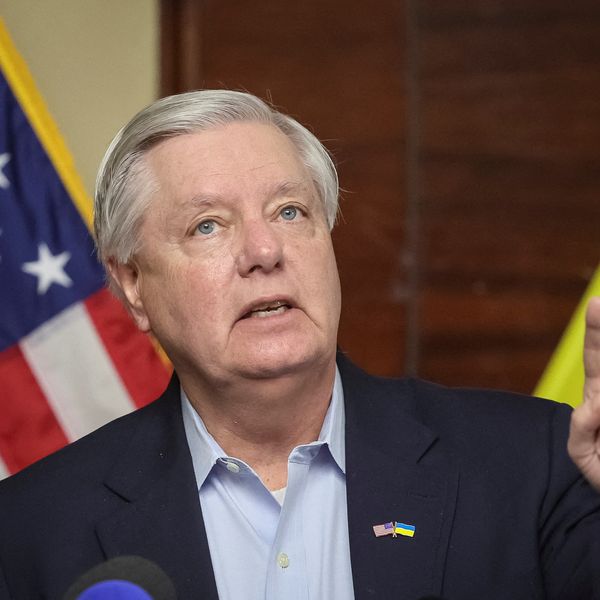Almost 100 days have now passed since the Congress passed $61 billion in emergency funding for Ukraine, a measure that included a condition that required the Biden Administration to present to the legislative body a detailed strategy for continued U.S. support.
When the funding bill was passed with much fanfare on April 23, Section 504, page 32 included the following mandate:
“Not later than 45 days after the date of enactment of this Act, the Secretary of State and the Secretary of Defense, in consultation with the heads of other relevant Federal agencies, as appropriate, shall submit to 18 the Committees on Appropriations, Armed Services, and Foreign Relations of the Senate and the Committees on 20 Appropriations, Armed Services, and Foreign Affairs of the House of Representatives a strategy regarding United States support for Ukraine against aggression by the Russian Federation: Provided, That such strategy shall be multi-year, establish specific and achievable objectives, define and prioritize United States national security interests…”
It is now August and there is still no sign on the part of the Biden Administration of any intention to submit such a strategy to Congress. This inevitably leads to the suspicion that no such strategy in fact exists. It also suggests that without a massive change of mindset within the administration, it is not even possible to hold — let alone make public —serious and honest internal discussions on the subject, as these would reveal the flawed and empty assumptions on which much of present policy is based.
This relates first of all to the requirement “to define and prioritize United States national security interests.” No U.S. official has ever seriously addressed the issue of why a Russian military presence in eastern Ukraine that was of no importance whatsoever to the U.S. 40 years ago (when Soviet tank armies stood in the center of Germany, 1,200 miles to the West) should now be such a threat that combating it necessitates $61 billion of U.S. military aid per year, a significant risk of conflict with a nuclear-armed Russia, and a colossal distraction from vital U.S. interests elsewhere.
Instead, the administration, and its European allies, have relied on two arguments. The first is that if Russia is not defeated in Ukraine, it will go on to attack NATO and that this will mean American soldiers going to fight and die in Europe. In fact, there is no evidence whatsoever of any such Russian intention. Russian threats of escalation and (possibly) minor acts of sabotage have been outgrowths of the war in Ukraine, and intended to deter NATO from intervening directly in that conflict — not actions intended to lay the basis for an invasion of NATO.
Western commentators like to state Russian public ambitions beyond Ukraine as a given fact, but when asked to provide actual statements to this effect, they are unable to do so. Nor, at least judging by Putin’s latest statement, does he intend (or believe it possible) to “wipe Ukraine off the map.” The top official Russian goals include limited territorial gains, Ukrainian neutrality, and Russian language rights in Ukraine — all questions that can legitimately be explored in negotiations.
Moreover, given the acute difficulties that the Russian military has faced in Ukraine, and the Russian weaknesses revealed by that conflict, the idea of them planning to attack NATO seems utterly counter-intuitive. For Russia has been “stopped” in Ukraine. The heroic resistance of the Ukrainian army, backed with Western weapons and money, stopped the Russian army far short of President Putin’s goals when he launched the war. They have severely damaged Russian military prestige, inflicted enormous losses on the Russian military, and as of today, hold more than 80% of their country’s territory.
The Biden administration has issued partly contradictory statements about the purpose of U.S. aid to Ukraine: that it is intended to help Ukraine “win”, and that it is intended to help “strengthen Ukraine at the negotiating table.” They have not however fulfilled their legal obligation to define to Congress what “winning” means, nor why if the war will end in negotiations, these negotiations should not begin now — especially since there is very strong evidence that the Ukrainian military position, and therefore Ukraine’s position at the negotiating table, are getting worse, not better.
As Samuel Charap and Jeremy Shapiro have written in response to the latest US despatch of weapons to Ukraine:
“[A]daptation and adjustment do not constitute strategy, and reactive escalation absent a strategy is not sound policy. Escalating U.S. involvement in this conflict—or any conflict—should be guided by an idea about how to bring the war to an end.”
As with U.S. campaigns in Vietnam and elsewhere, the administration and its allies have tried to play the “credibility” card: the argument that it is necessary to defeat Russia in Ukraine because otherwise, China, Iran and other countries will be emboldened to attack the United States or its allies. But like the line about Russian ambitions beyond Ukraine, this is simply an assumption. There is no actual evidence for it at all.
It can, with equal or greater validity, be assumed that the governments of these countries will make up their minds according to calculations of their own interests and the military balance in their own regions.
The final administration line of argument is a moral one: that “Russian aggression must not be rewarded” and that “Ukrainian territorial integrity must be restored.” Since, however, any realistic negotiations towards a peace settlement will have to involve de facto recognition of Russian territorial gains (not de jure recognition, which the Russians do not expect and even the Chinese will not grant), this statement would seem to rule out even the idea of talks. On the face of it therefore, the Biden administration would appear to be asking the American people to spend indefinitely tens of billions of dollars a year on an endless war for an unachievable goal.
If this is a mistaken picture of the administration’s position, then once again, it has a formal obligation under the bill passed by Congress in April to tell the American people and their elected representatives what their goals in Ukraine in fact are. Then everyone will be able to reach an informed judgment on whether they are attainable, and worth $61 billion a year in American money.
Unfortunately, it seems that the administration’s actual position is to kick this issue down the road until after the presidential election. Thereafter, either a Harris administration will have to draw up new plans, or a Trump administration will do so. But given the length of time it takes a new administration to settle in and develop new policies, this means that we could not expect a strategy on Ukraine to emerge for eight months at best.
If the Ukrainians can hold roughly their present lines, then this approach could be justifiable in U.S. domestic political terms (though not to the families of the Ukrainian soldiers who will die in the meantime). There is however a significant risk that given the military balance on the ground, and even with continued aid, Ukraine during this time will suffer a major defeat. Washington would then have to choose between a truly humiliating failure or direct intervention, which would expose the American people to truly hideous risks.
There is an alternative. Since President Biden will in any case step down next January, he could take a risk and try to bequeath to his successor not war, but peace. In terms of domestic politics, to open negotiations with Russia now would deprive Donald Trump and JD Vance of a campaigning position, and would spare a future Democrat administration (if elected) from a very difficult and internally divisive decision.
The first step in this direction is for the Biden administration clearly to formulate its goals in Ukraine, and — as required by law — to submit these goals to the American people.
- Pass Ukraine aid, but make it conditional on ending the war ›
- Rep. Warren Davidson: 'No mission, no aid' for Ukraine ›















